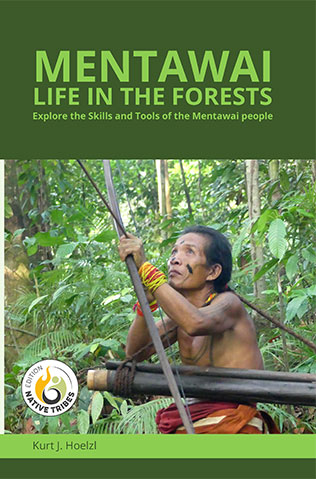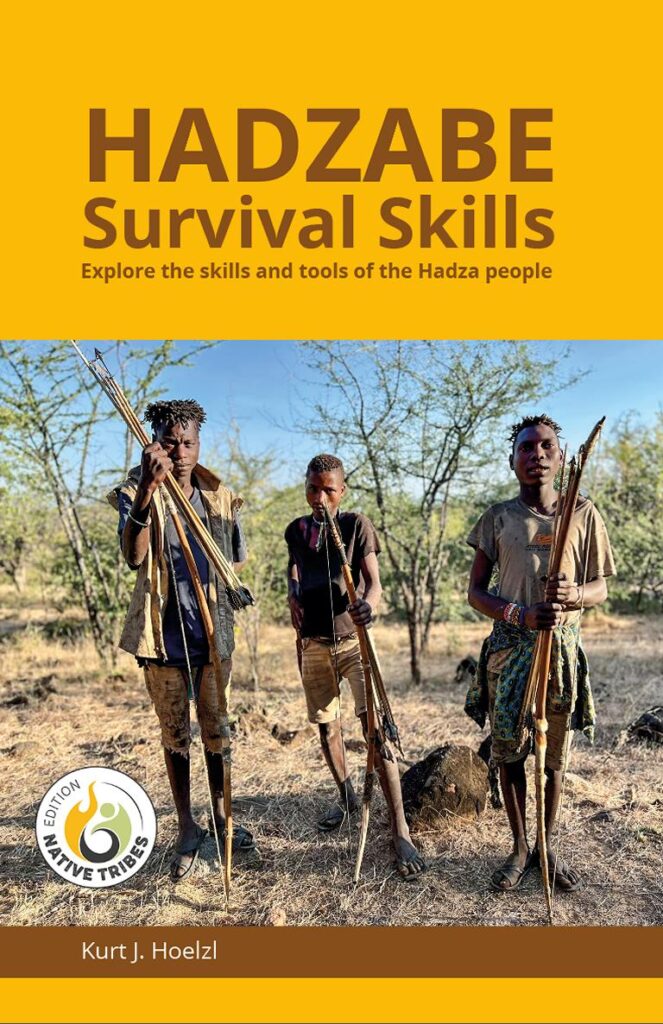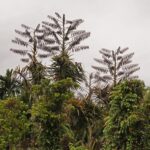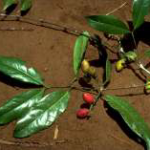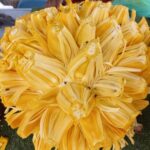Rattan palm fruits are available from most of the 70 species of the Calamus genus in Malaysia. But also species of Daemonorps and Korthalsia rattan genera often carry edible fruits. We went with the Jahai Orang Asli people into the forests near Royal Belum State Park in Perak, and collected rattan palm fruits from two different species. One species seemed to be Calamus ornatus, and the other one resembled Calamus manan.
All articles on this website are not the result of scientific research projects, but should explain in a popular-scientific way practical knowledge for simple living and survival situations. It therefore should suffice to call the collected rattan palm fruits as ‘…belonging to the Calamus genus’.

Rattan palms
Rattan species can be determined by the ‘knee’, where the side branches meet the main stem, among other features. In our case, it confirms to be a Calamus species. The shape of this feature can be seen in the following three pictures.
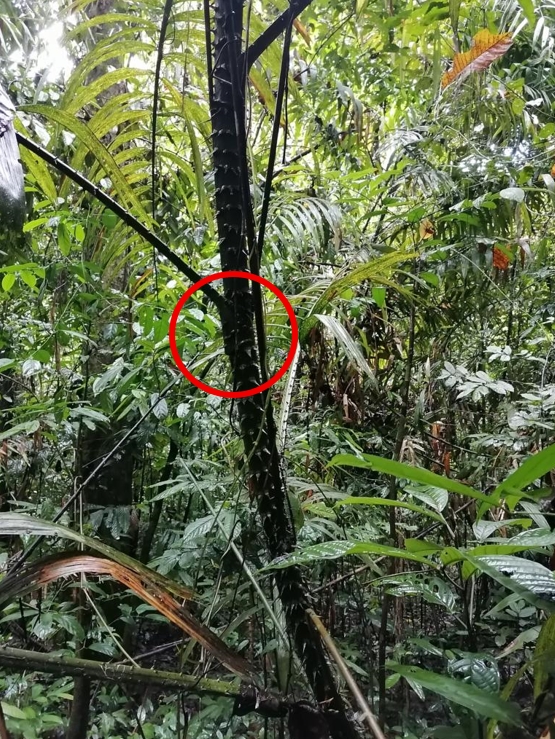
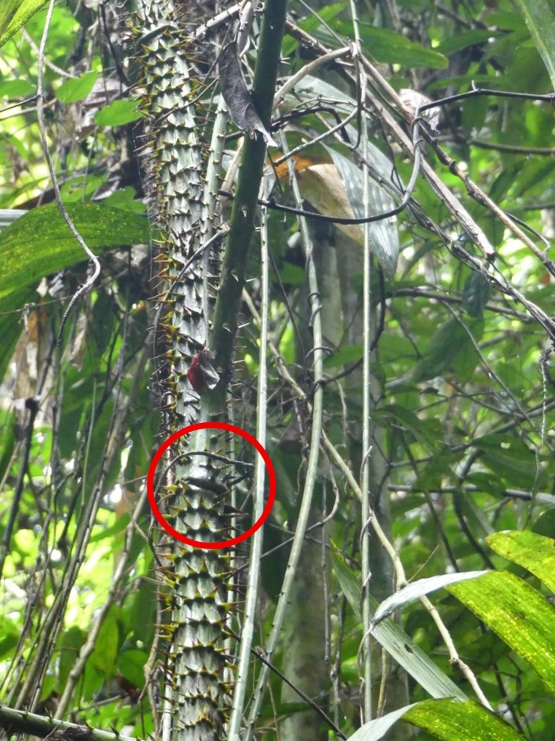

Description of rattan palm fruits
Every rattan species has its shape and appearance of fruits. Some of them are small and not suitable for eating, but others are distinctively large with a considerable size of mesocarp (fruit flesh or pulp). The primary fruiting season is between August and October, but often, there are ripe fruits outside this primary season. The fruits are typically harvested once they turn orange to red.
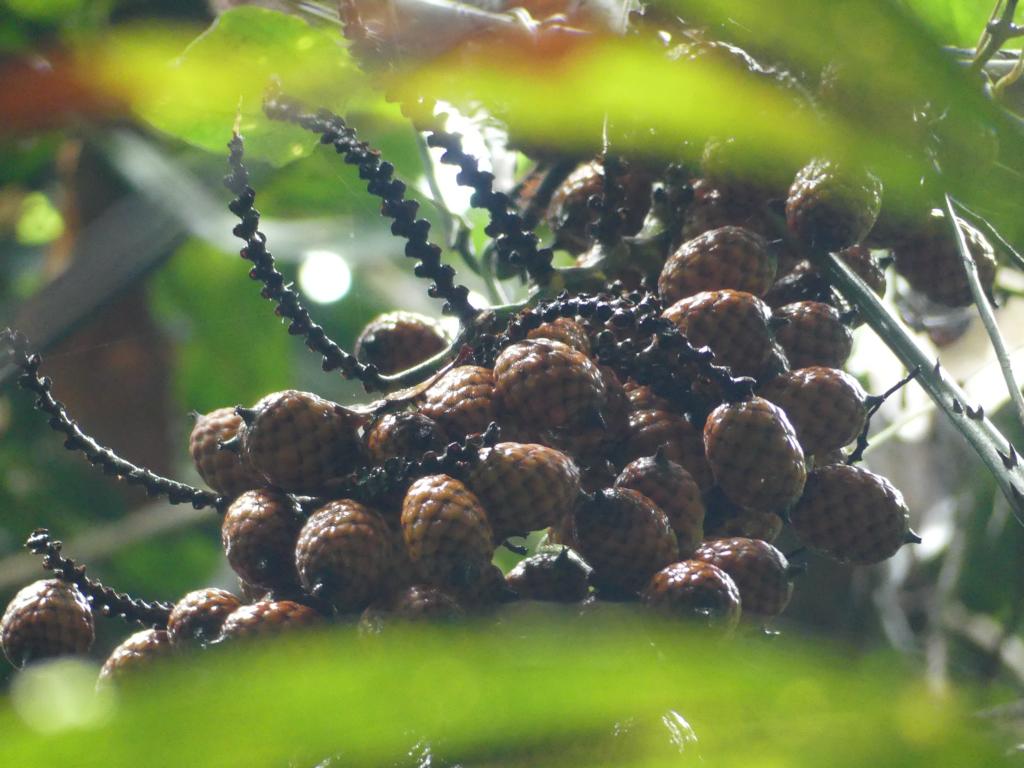
As one example of many others, we will have a look at the fruits of Calamus ornatus. These fruits consist of an exocarp, which is, in this case, a snakeskin-like outer protective cover. Inside, there is the fleshy mesocarp—the edible pulp.
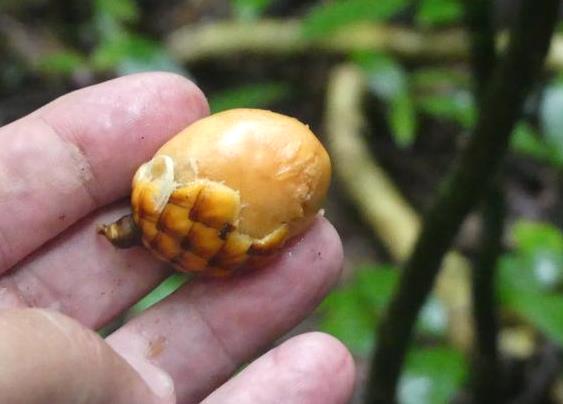
And within the pulp, a large seed hides itself, which clings firmly to the nutritious part of the rattan fruit.
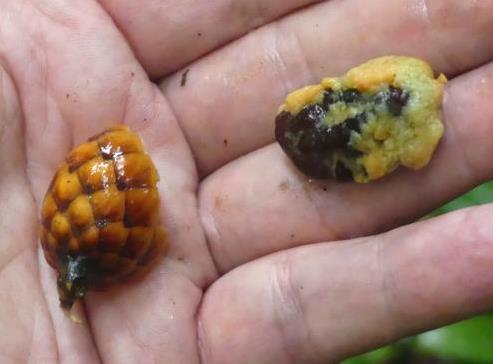
The pulp is sucked from the large seeds. These are pitted, irregular-shaped, and should be sown into the rainforest soil for germination again.
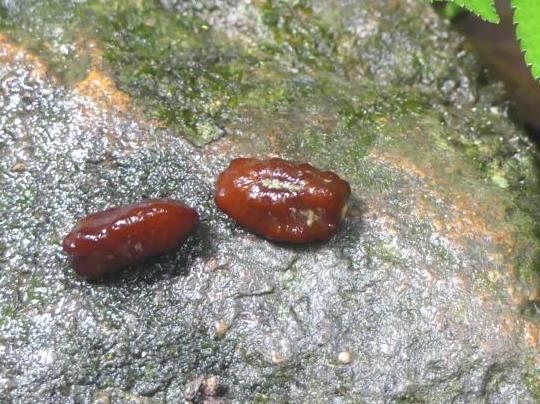
Nutritional value of rattan palm fruit pulp
Rattan palm fruit pulp is moderate to high in carbohydrates, which, however, depends on the ripeness of the fruits. Immature fruits will contain more starch, which converts to sugars (glucose and fructose) as they ripen. Therefore, no definite figures can be provided. Proteins, fats, and fibers in the pulp are low, and there is only a small amount of vitamin C. Rattan palm fruits are, therefore, more of a traditional and emergency food, rather than being a primary source of nutrition.
How to harvest rattan palm fruits
As the stem of rattan palms cannot support the plant itself, it uses its flagella to cling to other trees to reach the sunlight. Flagella and the stem themselves are covered in thorns. It is therefore not possible to climb a rattan palm.
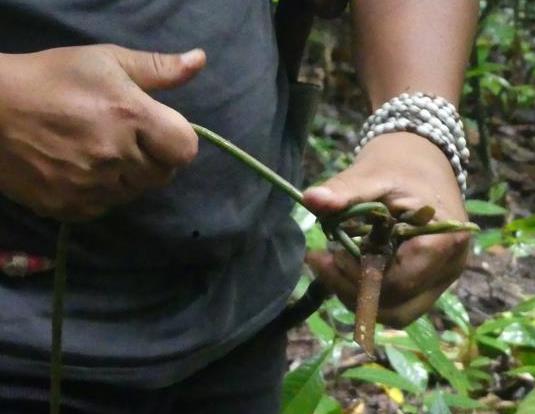

Instead, Jahai people cut a long stick with a fork at the thinner end and fixate another stick to this fork, so that a kind of 3-pronged whirl is formed.
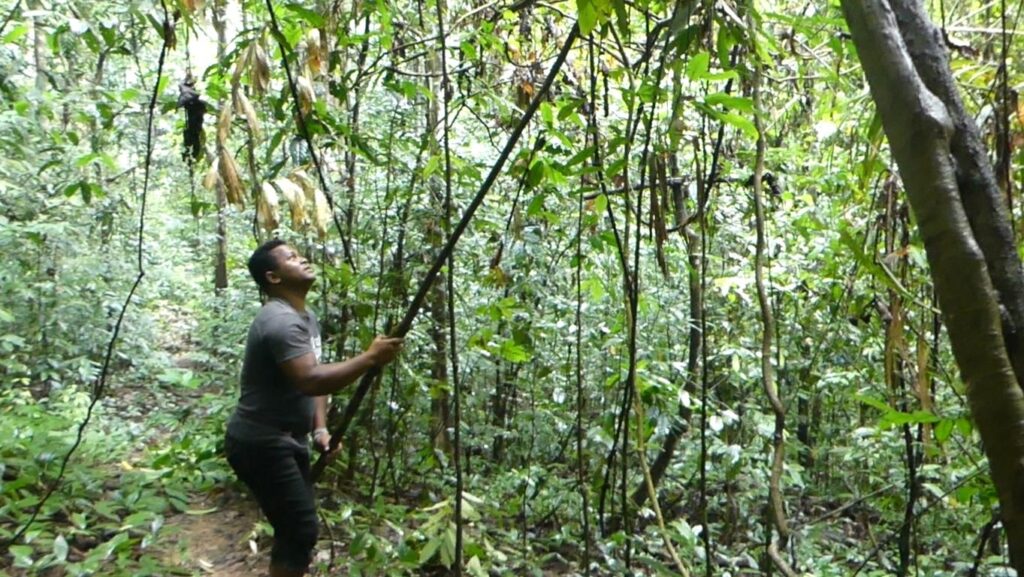
With this harvesting device, they try to reach the fruit bunch and whirl around the fruits. By that action, the ripe fruits are getting detached and falling to the ground, where they will be collected.
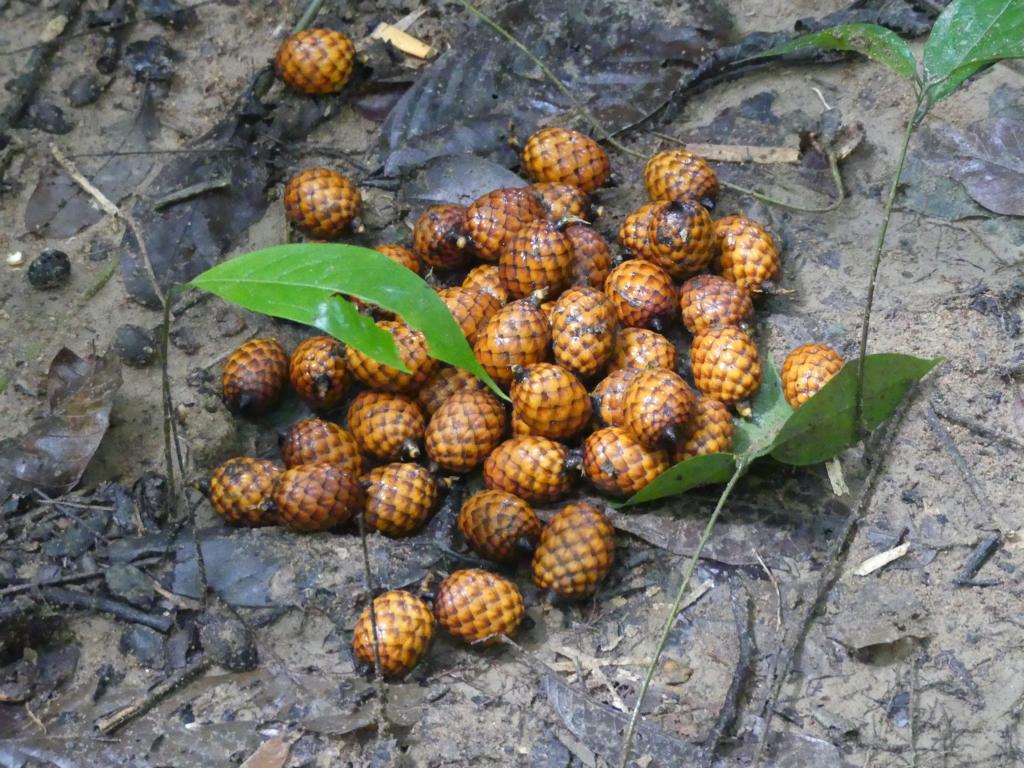
Another harvesting technique employed by them is that they climb up a tree next to the rattan palm and rip off the fruit bunch of the neighboring palm with the help of a forked branch.
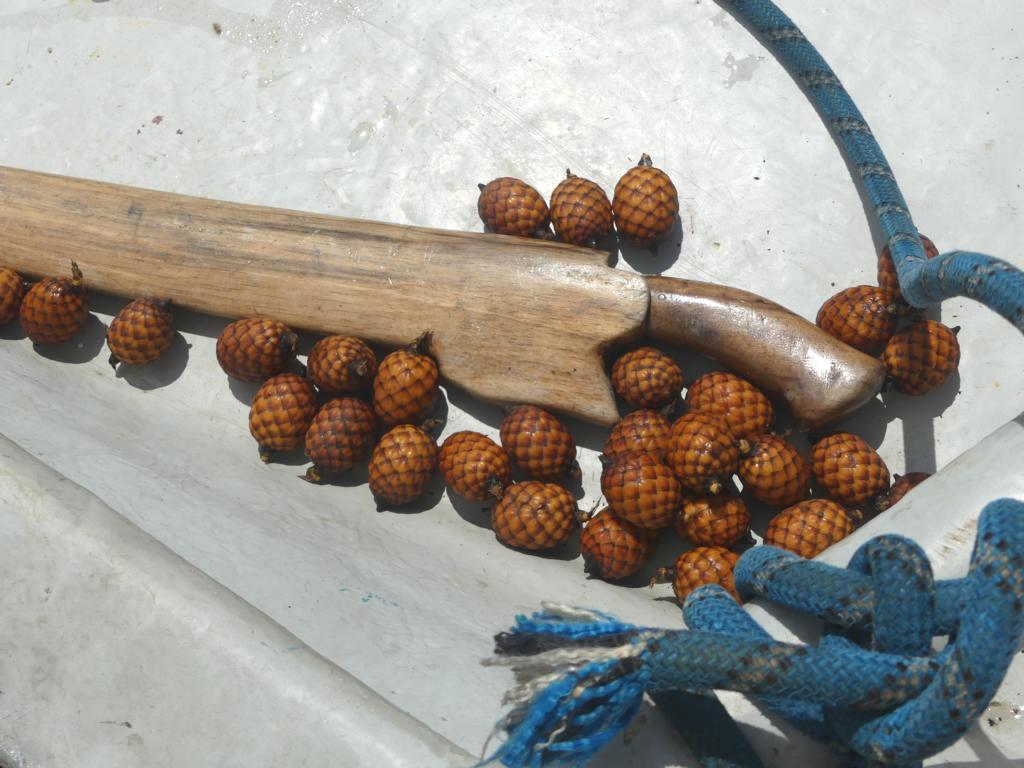
Lessons learned about rattan palm fruits in Perak’s jungles:
- Most Calamus palm species carry edible fruits.
- The nutritional value of the pulp is relatively low.
- The fruits are harvested with the help of an improvised 3-pronged whirly on a long stick, or by climbing on a neighboring tree and using a forked branch.
.

